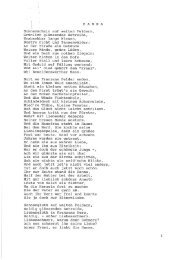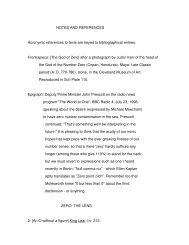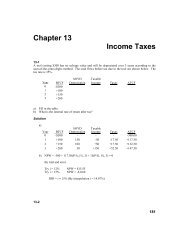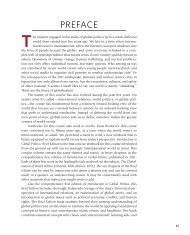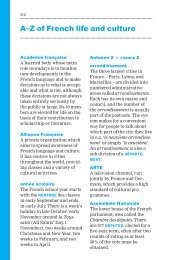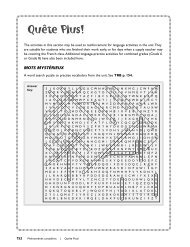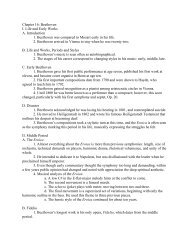CHAPTER 3 Consumer Preferences and Choice
CHAPTER 3 Consumer Preferences and Choice
CHAPTER 3 Consumer Preferences and Choice
Create successful ePaper yourself
Turn your PDF publications into a flip-book with our unique Google optimized e-Paper software.
03-Salvatore-Chap03.qxd 08-08-2008 12:41 PM Page 67<br />
6<br />
U 2<br />
U 1<br />
U 0<br />
0 2 4 6 Q X<br />
<strong>CHAPTER</strong> 3 <strong>Consumer</strong> <strong>Preferences</strong> <strong>and</strong> <strong>Choice</strong> 67<br />
Q Y Q Y U0 U1 U2 4<br />
2<br />
Q Y<br />
8<br />
6<br />
4<br />
2<br />
U 0<br />
U 1<br />
U 2<br />
0 2 4 6 8 Q X<br />
6<br />
4<br />
2<br />
Q Y<br />
0 2 4 6 Q X<br />
10<br />
8<br />
6<br />
3<br />
A<br />
B<br />
U 0<br />
C<br />
U 1<br />
U 2<br />
F<br />
0 2 4 6 Q X<br />
FIGURE 3.5 Some Unusual Indifference Curves Horizontal indifference curves,<br />
as in the top left panel, indicate that X is a neuter; that is, the consumer is indifferent<br />
between having more or less of it. Vertical indifference curves, as in the top right<br />
panel, would indicate instead that commodity Y is a neuter. Indifference curves that<br />
are negatively sloped straight lines, as in the bottom left panel, indicate that MRSXY is<br />
constant, <strong>and</strong> so X <strong>and</strong> Y are perfect substitutes for the individual. The bottom right<br />
panel shows indifference curves that are concave to the origin (i.e., MRSXY increases).<br />
Finally, the bottom right panel shows indifference curves that are concave rather than<br />
convex to the origin. This means that the individual is willing to give up more <strong>and</strong> more<br />
units of good Y for each additional unit of X (i.e., MRSXY increases). For example,<br />
between points A <strong>and</strong> B on U1, MRSXY = 2/2 = 1; between B <strong>and</strong> C, MRSXY = 3/1 = 3;<br />
<strong>and</strong> between C <strong>and</strong> F, MRSXY = 3/0.5 = 6. In Section 3.5, we will see that in this unusual<br />
case, the individual would end up consuming only good X or only good Y.<br />
Even though indifference curves can assume any of the shapes shown in Figure 3.5,<br />
they are usually negatively sloped, nonintersecting, <strong>and</strong> convex to the origin. These characteristics<br />
have been confirmed experimentally. 9 Because it is difficult to derive indifference<br />
curves experimentally, however, firms try to determine consumers’ preferences by<br />
marketing studies, as explained in Example 3–2.<br />
9 See, for example, K. R. MacCrimmon <strong>and</strong> M. Toda, “The Experimental Determination of Indifference<br />
Curves,” Review of Economic Studies, October 1969.



